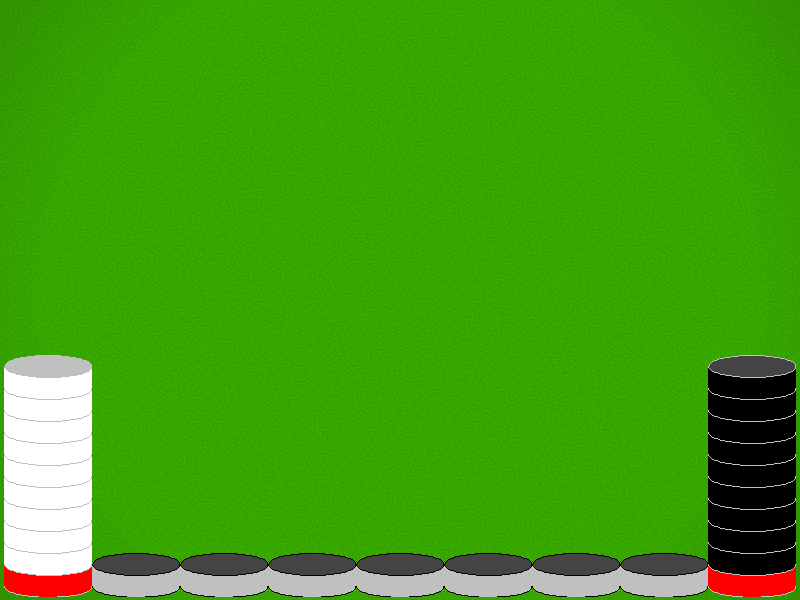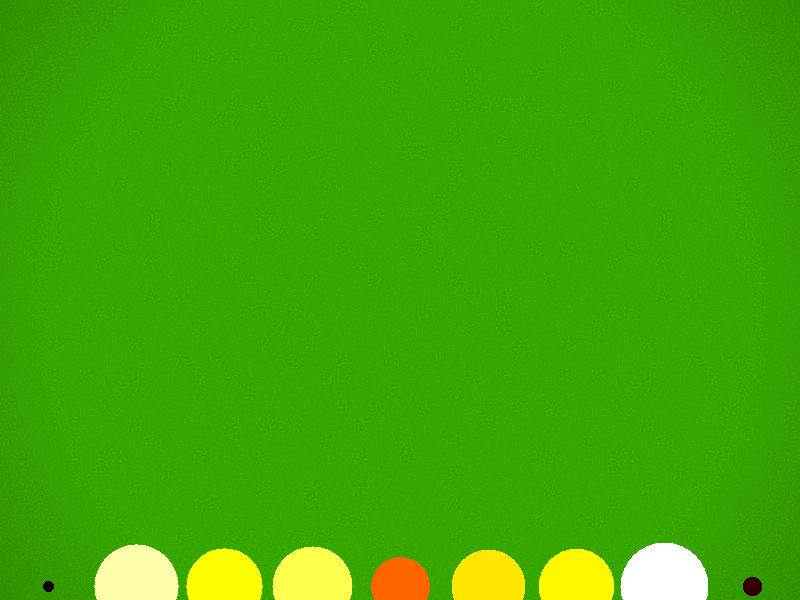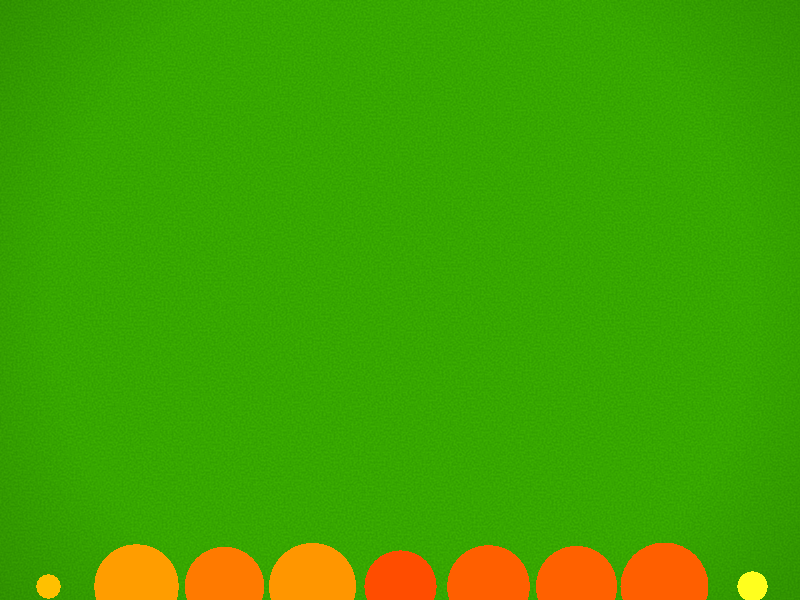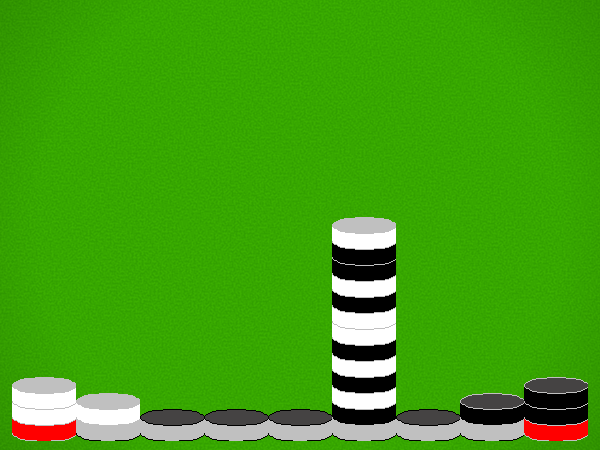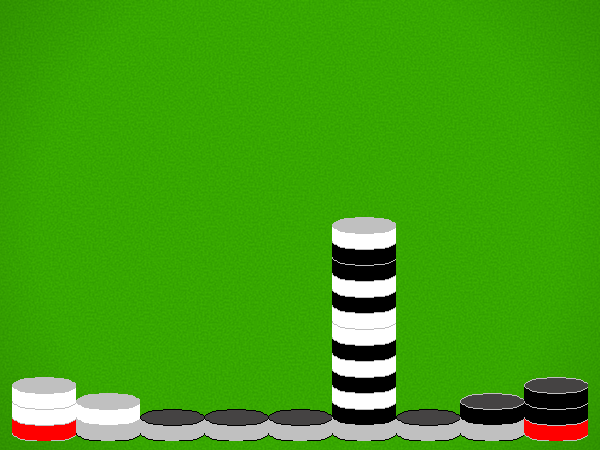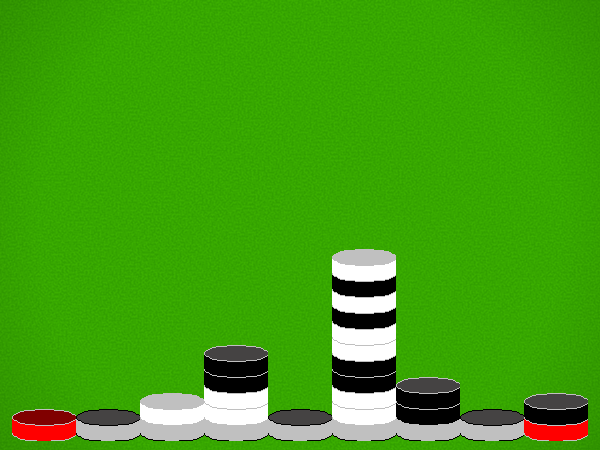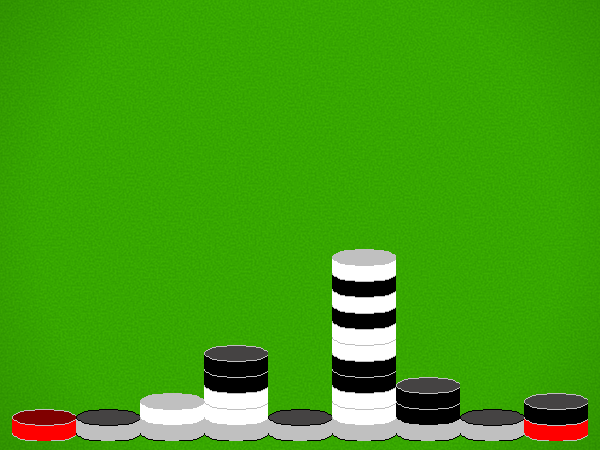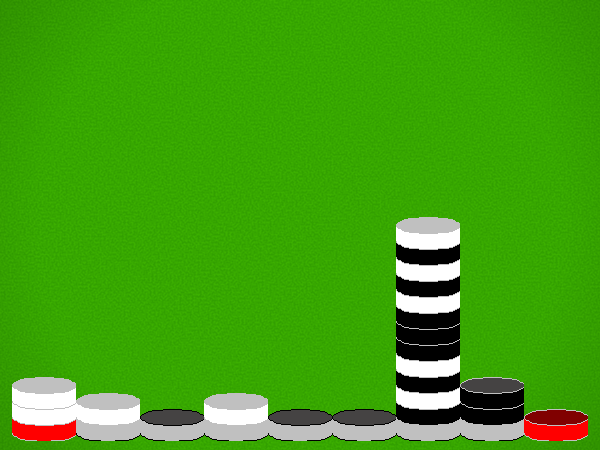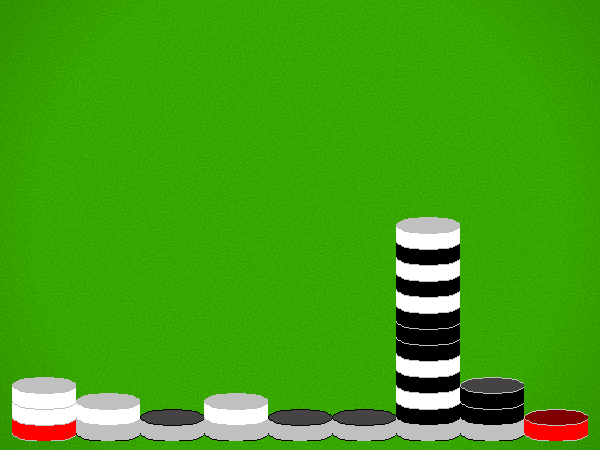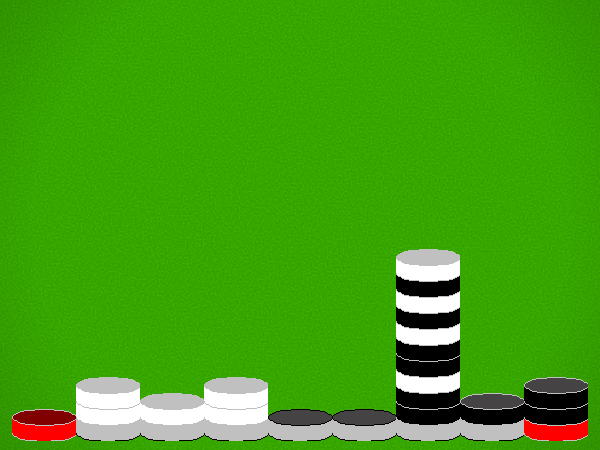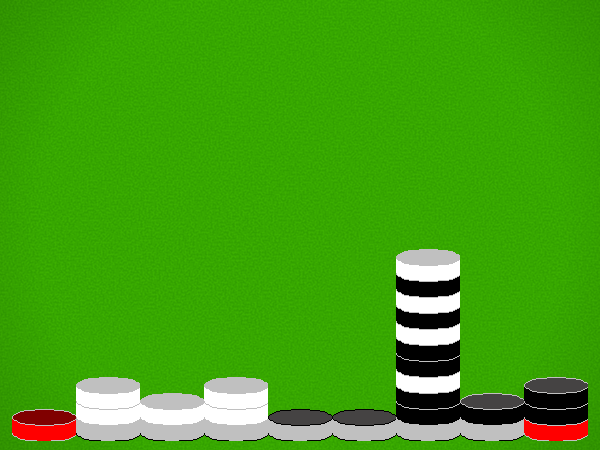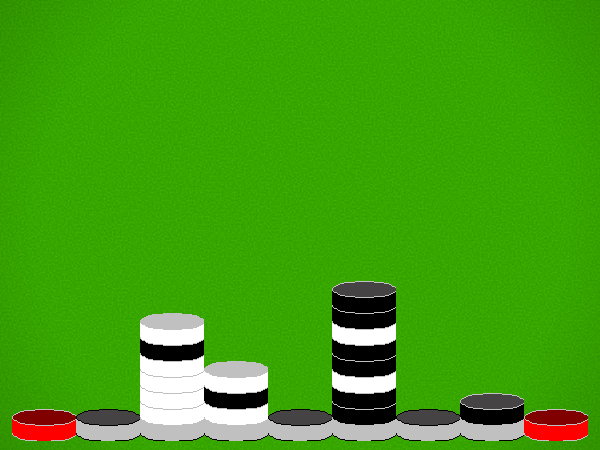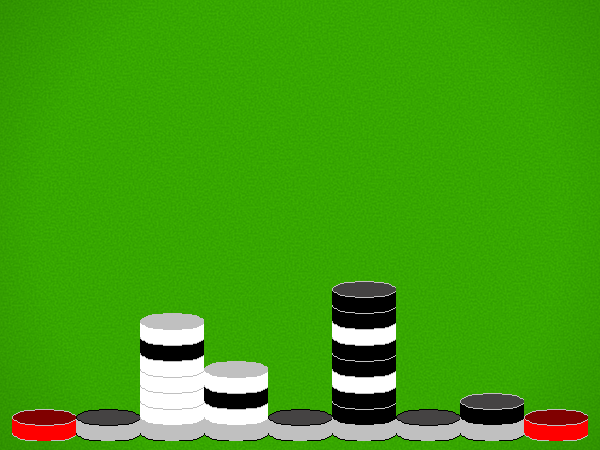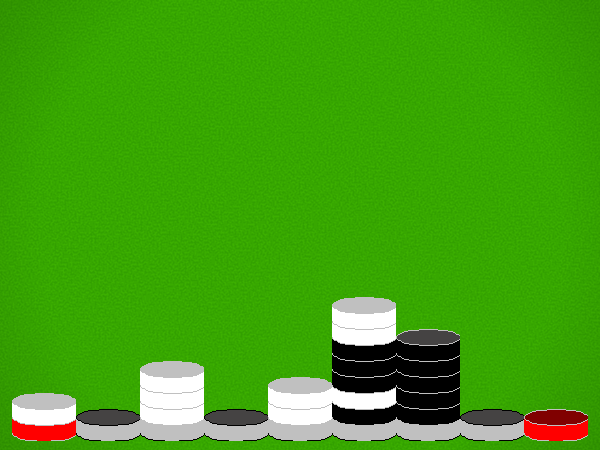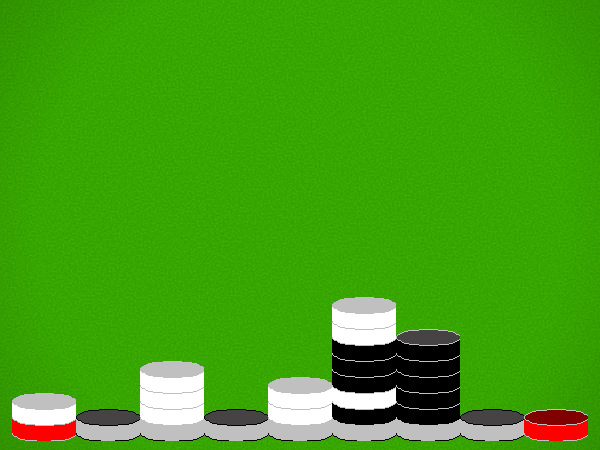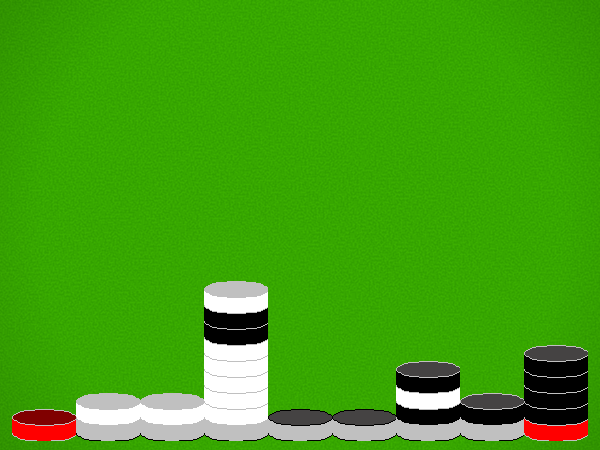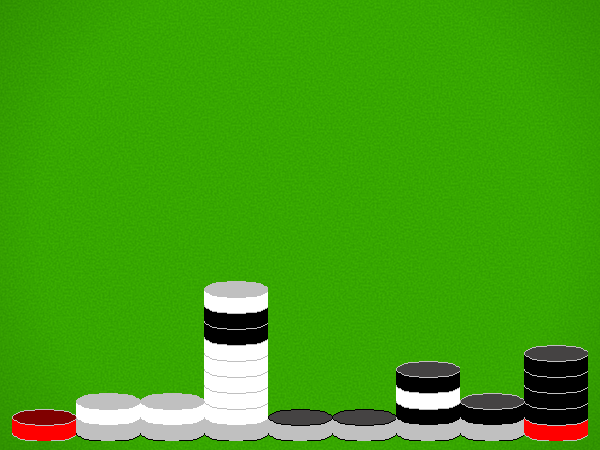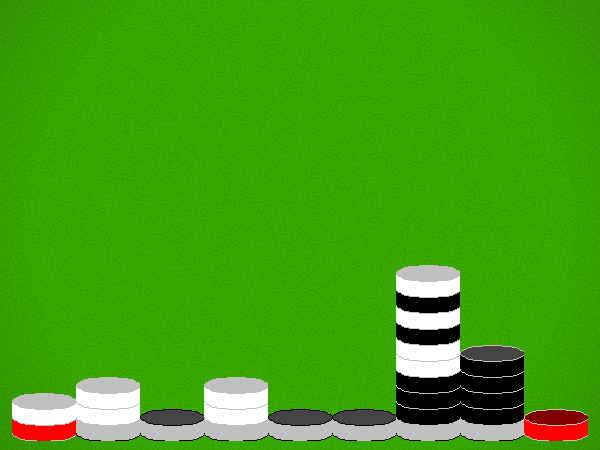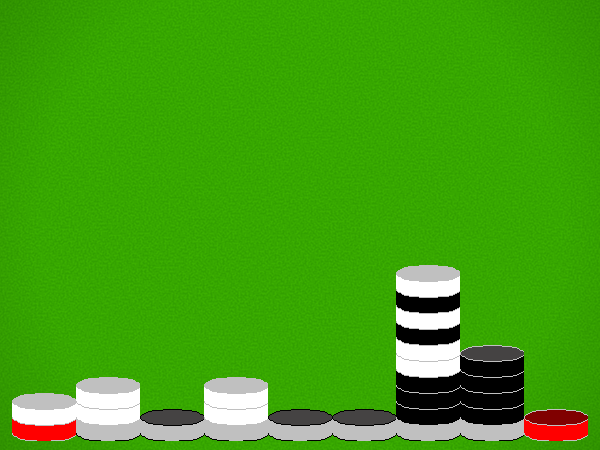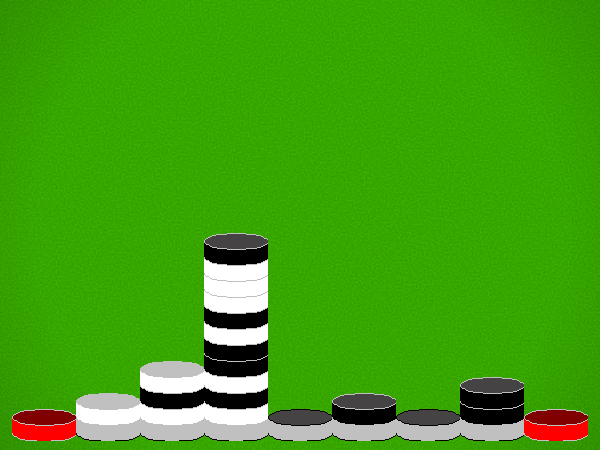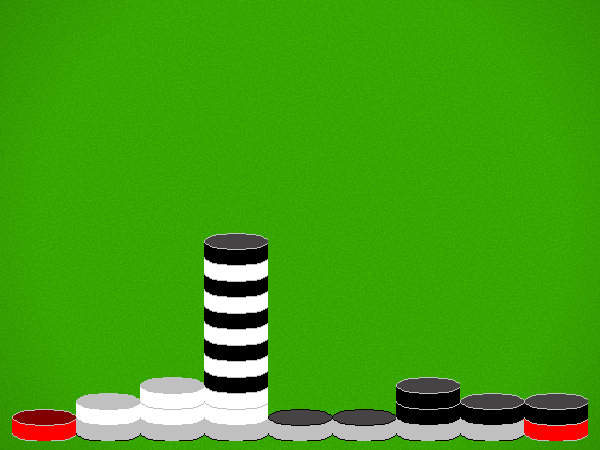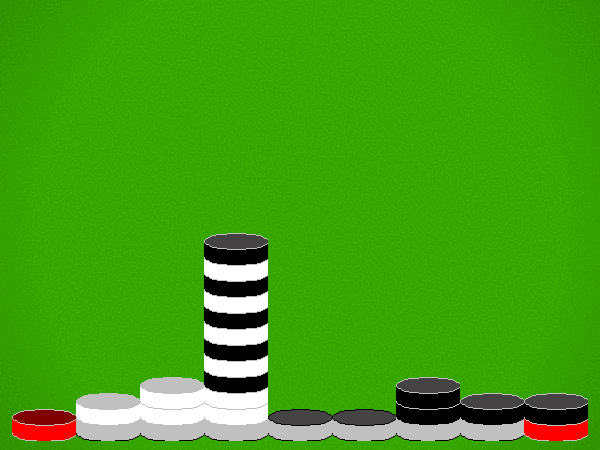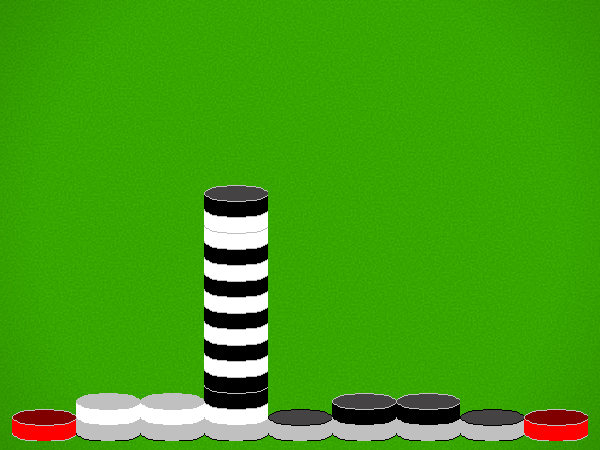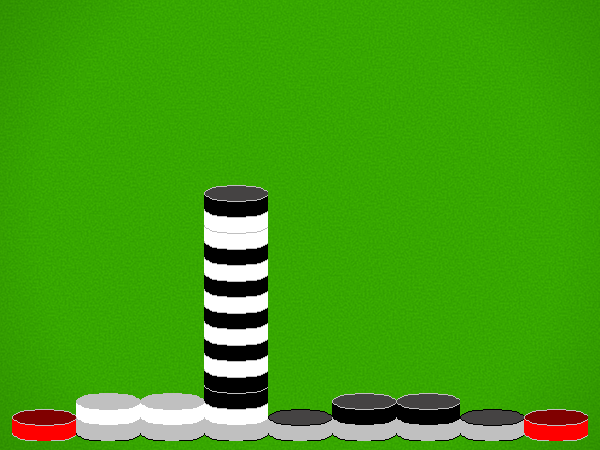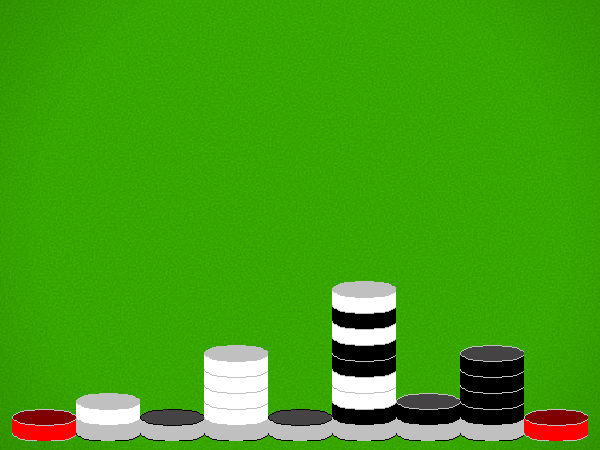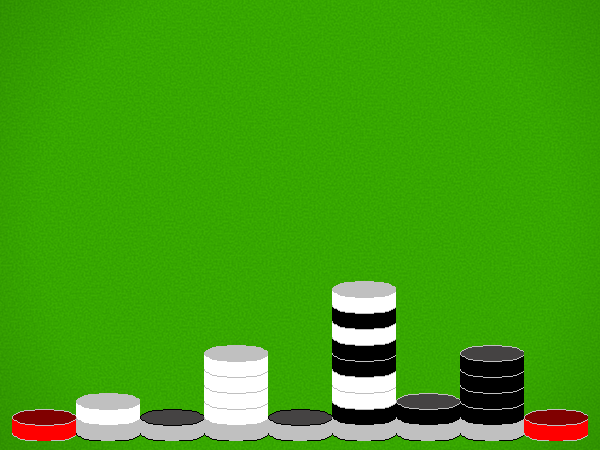| User | Rating | Comment |
|---|
| sagi | 7 | A great abstract game with minimalistic rules and components. It's very hard (for me at least) to think a couple of turns ahead, considering all the options. This leads to interesting decisions, evaluating how many discs of which tower to move. |
| mrraow | 7 | An interesting cage-fight, with pleasingly minimal components. Overall, I'm not sure how I feel about this. There are cold phases, where you must peel pieces off your stacks one at a time, and places where you can dash for the finish line. It bears some of the faults I associate with nim-family games, in that a position can go from opaque to solved over the course of a single move; but further play may allow for more complex strategy. Playable in Ai Ai. Liner notes; the most interesting thing here was the board/piece representation. Usually, I pre-generate all of the piece graphics at the start of the game, but in theory here you could have a single piece of height 27, and a vast number of orderings of the coloured pieces in that stack! For that reason, I had to rewrite my display code to allow piece graphics to be created generically, something I have subsequently re-used elsewhere. Note to self, I should go back and use this for Tak as well! |
| gidorah | 7 | |
| kathuna | 7 | |
| bayspiel | N/A | 18.03.01.03 |
| Master Thomas | 8 | |
| branstonoriginal | 5 | |
| Macinbond | 7 | |
| superbini | 7 | |
| Observer9 | 7 | |
| Arara | 6.5 | Generally I don‘t like abstract games. But this is really a nice one. |
| Zeppi | 6 | |
| Michiel | 7 | Simple abstract game, takes a couple of plays to master. |
| Michazhn | N/A | Homemade version! |
| rayzg | 6.5 | Impressively minimalist game! But I think I'm not a big fan of abstracts where the number of pieces in a stack dictates exactly how many spots it can move. These games compel players to plan their moves ahead more carefully and precisely. Actually, I think I just don't like counting spaces ... |
| Paolo Robino | 8 | |
| Celtic Joker | 5 | |
| Stephan Valkyser | 7.3 | Quick abstract with very straight-forward action. |
| Ninjastar | 7 | |
| schwarzspecht | 7 | |
| at010 | 7 | |
| vazkez_javi | 8 | |
| Handballer | 6 | |
| Mal17 | 7.5 | |
| Dada77 | 7 | |
| stambi1 | 6 | |
| gevati | 7 | |
| Wentu | 7.2 | like its brother Nonaga, it is simple, fast and enjoyable but i i think it is easily solvable and shortlived. still, 7 for the nice machanics |
| Emperor_Davidus | 8 | |
| Magdeburger | 7 | |
| Brettspielduett | 7 | |
| vilvoh | 6 | |
| yencool | 8 | |
| Venom71 | 6.7 | |
| ziph4 | 8 | This is one of those abstract games that mankind "discovers" rather than "invents". A super simple and clean set of rules, but an amazing depth! A high one-more-game value! |
| cherokeee | 8 | |
| Pfahrer | 8 | |
| AbstractStrategy | 8 | Great game! A bit of a brain burner for people like myself who like that kind of thing. Not sure why ANYONE is giving this game a 'light' rating in terms of complexity. They're playing it wrong. Those people must just be randomly moving their counters without strategising with the hope they'll randomly win. This game is DEEP! The only thing I would suggest is that the wording in the rules needs to be made clearer. People are used to moving stacks by the number or counters in the stack NOT by the number of stacks. If you introduce an unusual mechanic then you have to word that very clearly otherwise people read any ambiguity to be what they are familiar with rather than what they are unfamiliar with. Like one of the questioners in the forum for this page I originally thought the game was useless because the first player (if he/she had a brain) would always win on the first move. This is untrue but that's not what I got from reading the rules. This needs to be changed to make the proper movement mechanic CLEAR. Love the the game though when played properly. AMAZING! |
| Little Wizard | N/A | DIY |
| shotokanguy | 5 | Ok abstract filler if you’ve got poker chips handy. Mainly a counting game. I suppose it could be solved pretty easily with a computer. |
| ryoga121 | 5 | Juego simple de estrategia, abstracto. Mejor un P&P |
| grasa_total | 5 | In my one game, there was a brief stare-down in the center board and then suddenly it was over, the big stacks having moved past each other. More interesting play would require holding more pieces back to threaten opponents arriving home, I think? I don't know if that's a good strategy, though. |
| russ | 6 | 27 is a simple one-dimensional game (which thus reminds me a bit of another one-dimensional game we played a few months earlier by Claude Leroy: Pantarei). You're trying to move your disks to the far end of the line. Each turn you can pick up part of one of your stacks and move it forward exactly as many spaces as the number of stacks you currently have. It's a nice quick sort of "filler" abstract. |
| ecoboardgeek123 | 5.1 | DIY |
| davilde | 7 | Simple, rapide, tendu |
| Myszak | 9 | Home-made version. Big success with my most frequent opponents. Minimalized to 2x9 tokens = easy portable for pub tables = planks as areas;-). Top in its class, recommended. I wish there is some similar game playable at more players, too |
| Lecaro | 6 | |
| KingKobra | 7 | |
| lucabellu | 6 | |
| montsegur | 6 | |
| cactusse | 7 | |
| kawdjer | 6 | |
| Reuner | 6 | |
| Kaffedrake | 4 | Tactical stacking/crossing game with one-dimensional topology. Appears likely to break down into nim-like local situations like shooting discs at the same contested stack. The ability in the advanced game of messing with the board is a nice touch, but doesn't seem to fundamentally shake up the game. |
| sebastian85 | 7 | |
| warta | 6 | |
| Camponotus | 5 | |
| dtivadar | N/A | ESSEN 2017 |
| bluebee2 | 7 | PnP. Used Reversi pieces and wooden disks from Agricola |
| Pedrator | 8 | Clever little abstract game that you can take with you and play almost anywhere. I really like the compact size of this collection. After playing a few more times I really like it. It's clever, portable, fun. Excellent game that any abstract games fan should own. Fantastic! |
| Klausi300 | 7 | 7 |
| captncavern | 7 | |
| kadus | 7 | |
| AndrePOR | N/A | Print & Play Edition |
| pezpimp | 8 | What a simple mechanic, simply move your tower towards your opponents starting tile by the number of stacks that you have. The goal is to get to the opponents starting space with the largest stack. You can split your pieces as you wish and whoever is on top controls the stack. It looks and sounds so simple but it is quite fun, a filler for two with the right amount of strategy. Quite enjoyed this one. |
